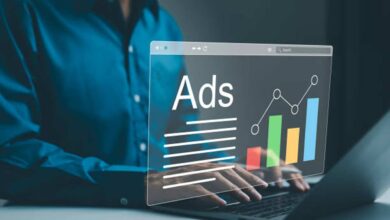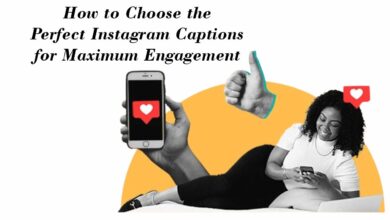
A good marketing strategy requires a lot of planning and looking at models that work. Many great businesses always look for opportunities to enhance their marketing and keep their customers engaged. One of the best ways to make your marketing strategy effective is through attribution models.
However, businesses often need clarification on which attribution model is more impactful: view-through or click-through. In this article, we profoundly discuss the view-through and click-through model, so you have a better idea. Keep reading!
Understanding View-Through Attribution
In digital marketing, view-through attribution is a technique that links conversions to ad impressions, even in cases when people are exposed to the advertisement without actually clicking on it. View-through attribution monitors conversions after someone sees an ad but does not click on it to interact with it. The user may visit the website directly or convert later via other channels instead of clicking on the advertisement.
View-through attribution gives the ad impression full or partial credit for the conversion within a specific attribution timeframe. This window, which can appear from a few hours to many days following the ad exposure, usually denotes the period during which conversions are linked to ad impressions.
View-through attribution aims to recognize the indirect impact of ad impressions on conversions, significantly when the advertisement’s exposure gradually raises brand awareness, contemplation, or desire to purchase.
What is view-through Attribution Used For?
Digital marketers employ view-through attribution to track the impact of ad impressions on conversions, even without user clicks. The following are some of the main goals and uses of view-through attribution:
- Assessing Brand Recognition: View-through attribution measures the influence of ad impressions on brand recognition and memory, which aids marketers in evaluating the success of their branding campaigns. It offers information on the number of conversions impacted by exposure to video, display, and other media commercials, which helps with long-term brand awareness and deliberation.
- Recognizing Upper-Funnel Tasks: View-through attribution shows how upper-funnel initiatives like display advertising and video ads indirectly influence conversions. It acknowledges how advertising impressions shape consumers’ views and considerations over time, especially for users who may engage with several touchpoints before converting.
- Enhancing Video and Display Advertising: View-through attribution identifies high-performing ad placements, creatives, and targeting tactics to assist advertisers in optimizing their display and video campaigns. By analyzing view-through statistics, advertisers may allocate money based on which ad types and locations are most efficient in generating conversions.
- Assessing Multi-Touch Attribution: View-through attribution enhances other attribution models like click-through and multi-touch attribution by offering information on how ad impressions contribute to the complete customer experience. It assists marketers in measuring the influence of various touchpoints on conversions and comprehending the overall effect of their advertising campaigns.
- Attributing Conversions Across Channels: Advertisers may link conversions to ad impressions on many platforms and channels using view-through attribution. It recognizes that even if people do not click on the advertising immediately, display ads, video commercials, social media, and other media indirectly promote conversions.
- Evaluating Ad Effectiveness: Beyond direct response measures like clicks and conversions, view-through attribution assists marketers in assessing the efficacy of their advertising campaigns. Considering the impact of ad impressions on consumer behavior and decision-making processes offers a more thorough understanding of ad performance.
Understanding Click-Through Attribution
In digital marketing, click-through attribution is a technique that links ad clicks directly to conversions. Click-through attribution examines the direct effect of ad interactions on driving conversions, unlike view-through attribution, which records conversions after users are exposed to ad impressions.
An ad interaction is credited with a conversion when a user clicks on it and then completes a desired activity, such as filling out a form or purchasing. A straightforward and unambiguous way to gauge how well targeting, creatives, and ad placements contribute to user engagement and conversions is through click-through attribution.
What is Click-through Attribution Used for?
In digital marketing, click-through attribution is mainly used to gauge how well an advertisement’s interactions result in conversions. It is specifically intended to link ad clicks directly to conversions. The following are some of the main goals and uses of click-through attribution:
- Enhancing Advertising Initiatives: Which advertisements, creatives, messages, and targeting techniques generate the most clicks and conversions? Click-through attribution may help determine this. Click-through data analysis allows advertisers to pinpoint high-performing pieces and adjust their programmatic ad campaigns accordingly.
- Measuring ROI: Click-through attribution assists marketers in calculating the return on investment (ROI) of their advertising campaigns by monitoring conversions that arise from ad clicks. It helps them to calculate the amount of money made from advertising campaigns and evaluate their profitability.
- Comprehending Customer Behaviour: By monitoring the complete customer journey from ad click to conversion, click-through attribution provides insights into user behavior and preferences. Advertisers may analyze click-through data to see which advertisements most effectively reach their target demographic and how consumers navigate their website or landing page after clicking on an ad.
- Allocating Advertising resources: Click-through attribution assists marketers in efficiently using their advertising resources by pinpointing the best channels, placements, and campaigns to drive conversions. By prioritizing resources toward high-performing advertising campaigns, marketers may optimize their advertising expenditures and attain superior outcomes.
- Testing and Optimisation: With click-through attribution, marketers may experiment and run A/B tests to maximize the performance of their ads. Advertisers may determine the most successful methods for generating clicks and conversions by experimenting with various ad creatives, messages, calls-to-action, and landing page designs.
- Performance Reporting: Click-through attribution offers valuable information for analysis and reporting on performance. Advertisers may assess the success of their ad campaigns and make data-driven choices by monitoring essential metrics, including click-through rates, conversion rates, cost per click (CPC), and cost per acquisition (CPA).
Read Also: 7 Essential Tips for Google Ads Optimization
Impact of View-Through Attribution on Digital Marketing
View-through attribution captures the impact of upper-funnel activities like display advertising and brand awareness initiatives, providing insightful information about the long-term effects of ad impressions on conversions. View-through attribution assists companies in understanding the whole customer experience and gauging the success of their branding initiatives by acknowledging the part that ad impressions play in influencing consumer perceptions and consideration. View-through attribution, however, has the potential to inflate the significance of ad impressions and is vulnerable to ad fraud, so it’s critical for companies to evaluate data cautiously and cross-check conclusions with other metrics.
Impact of Click-Through Attribution on Digital Marketing
With click-through attribution, the direct impact of ad interactions on generating conversions can be measured, giving real-time optimization information for ad campaigns. Businesses may use this attribution model to find high-performing targeting techniques and ad creatives, follow the customer journey from ad click to conversion, and allocate resources efficiently. However, click-through attribution may need to pay more attention to the impact of advertising efforts and ignore the effects of upper-funnel actions, especially for campaigns aimed at raising brand recognition and consideration.
Optimizing Marketing Strategies with Both Attribution Models
Although view-through vs click-through attribution is a hot topic, combining the two models offers a complete picture of advertising effectiveness and consumer behavior. Businesses may comprehensively understand the client journey, assess the effectiveness of upper- and lower-funnel operations, and adjust their marketing strategies by merging view-through and click-through data. Businesses may get better outcomes throughout the marketing funnel and optimize the efficacy of their advertising campaigns by implementing this integrated strategy.
Conclusion
Both view-through and click-through attributions help make a marketing strategy successful. However, both impact digital marketing differently; businesses use them according to their goal and vision.







